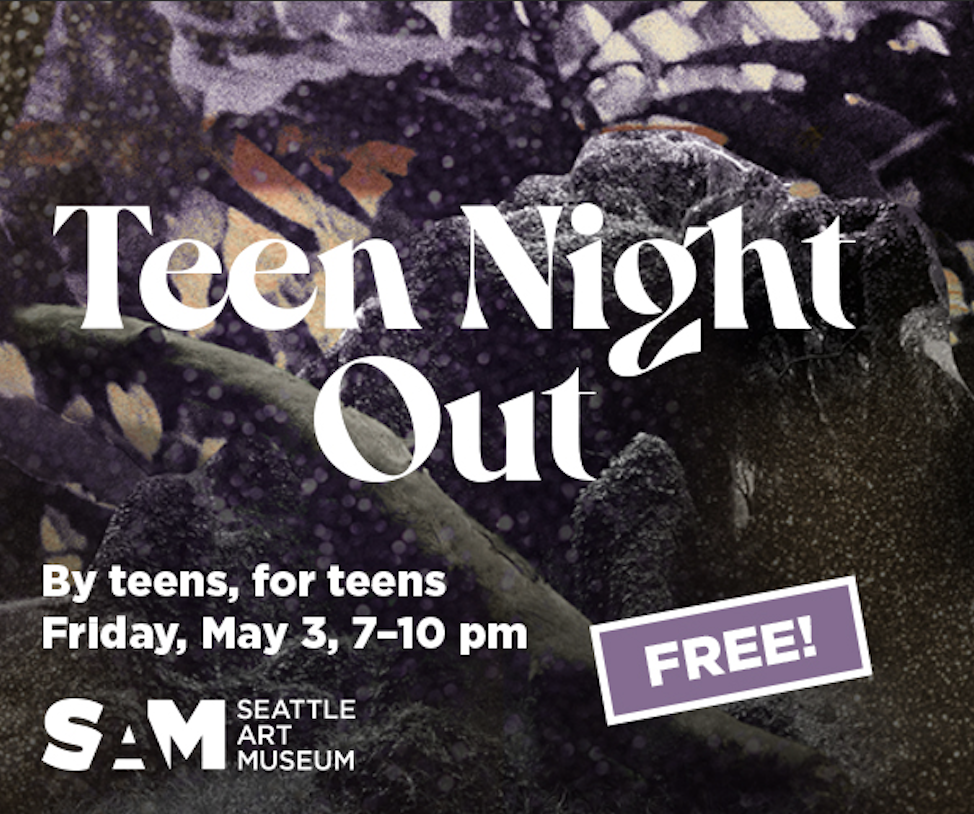MOHAI Shows How Art Shaped the Activism of Seattle
Written by TeenTix Press Corps Newsroom Writer Eileen MacDonald, and edited by Teen Editorial Staff Member Hannah Schoettmer!
.jpg)
The recent MOHAI sponsored event, Engage: The Art of Protest, cultivated artistic empowerment throughout the Seattle community.
Walking through the glass doors of the MOHAI, we were greeted by plaisc covered tables strewn with photographs of powerful and historic street protests: women with chains around their necks fighting for the Equal Rights Amendment in the 1960s, workers picketing outside Pike Place Market, elderly women with fire in their eyes holding wooden crosses to commemorate those killed during a protest in Nicaragua. We were asked to sit at a table with a picture that resonated with us, giving everyone there an icebreaker and reason to interact with the strangers and friendly faces that surrounded them.
The room was filled with artists, many of whom have been engaged in the Seattle art scene for years, and have frequently participated in building pieces of art around the city meant to protest local injustice. Words of people greeting old friends, making new ones and immersing themselves in deep historical discussion floated through the air between people from entirely different generations. While only two speakers were scheduled, it was apparent that a majority of those in the room could have educated the audience on the history of Seattle activism and street protests, and present a different aspect of it.

We began discussion within our tables of the pieces before us. One woman told our table a detailed history of the protests during the Iran-Contra affair. Another older couple talked about their visit to Berlin during the anti-Reagan era of the ‘80s. The conversation placed everyone in a curious and engaged mindset, preparing them for the lecture about to begin exploring the history of street protests in Seattle.
Lisa Bade, a local artist and activist, was the main speaker for the event. She showed the group Powerpoint slides conveying the rich history of Seattle as a protest city—a reputation that, despite the popular belief, did not begin with the 2017 Women’s March, nor the March for Our Lives. With its start as a working-class town, for decades Seattle has been known for its labor-related activism. Citizens have tackled economic and social justice issues through that lense in a series of historic protests. In fact, according to Bade, 2019 will mark the 100 year anniversary for the Seattle General Strike of 1919, when general work halted for five days as laborers fought for higher wages in the wake of World War I.
Bade’s passion shone through her words with an unmistakable enthusiasm, empowering the room to find the same fervor in activism that she and her colleagues do. And while her talk went over the allotted time, and well into that set aside for questions, her extensive insight and knowledge made for a forgiving audience.
.jpg)
Bade’s presentation, rather than just a history lesson, was a call to action for all those who understand the importance of art as a form of communication, and as a force for change. Art creates a spectacle and a lasting memory—one that is approachable rather than threatening. In the case of a protest, it provides a safe venue for divisive conversation. Cycling through the black and white photographs, we were reminded that we live in a day and age where we have the power to document our activism.We can force the media to pay attention to our voices, a power that did not always exist, and one that should be utilized.
As her speech ended, Bade introduced Shemona Moreno, a climate activist and organizer for 350 Seattle who provided materials for all attendees to create some of their own protest art. With blocking ink, ceramic stamps and flat squares of fabric, inspired participants were invited to create messages of love and resistance, and had the opportunity to add to a community mural.
The creative energy buzzing throughout the room reinforced Bade’s claim about the nature of Seattle’s artistic courage, and the progressive change that a group of engaged artists is capable of. While this was a singular event, it sparked a fire for emboldened activists that has the capacity to spread throughout the city.
The Teen Editorial Staff is made up of 5 teens who curate the review portion of the TeenTix blog and manage the TeenTix Newsroom. More information about the Teen Editorial Staff can be found HERE.
The TeenTix Press Corps promotes critical thinking, communication, and information literacy through criticism and journalism practice for teens. For more information about the Press Corps program see HERE.


